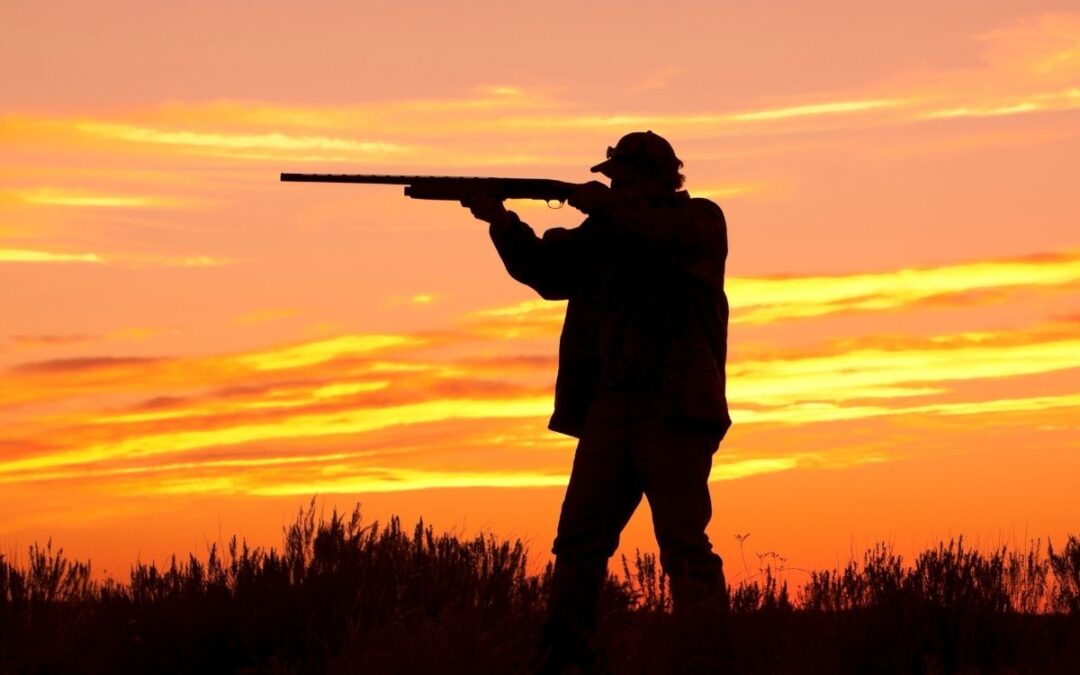Many have heard reports of the steady increase in hunting and fishing license sales in the past year, but what is really causing this shift?
Hunting in History
Hunting in America experienced its first major expansion in the years shortly after the end World War II. A strong U.S. economy, paid vacation time for more and more workers, and, for many, a car in the driveway, increased the pool of Americans who could now go afield. At the same time, maturing wildlife management programs were showing good success in helping to rebuild populations of many popular game species in states across the country.
Added opportunity and more game were just what the doctor ordered: Hunting license sales that had hovered around the seven million mark before the war, ballooned to over 12.5 million by the late forties. These WWII firearm familiar dads avidly passed on the hunting tradition to their youngsters, the “Baby Boom” generation. Not surprisingly, hunter numbers peaked in early 80s at around 17 million. At that point, the youngest of the baby boomers were old enough to hunt and could join dad and grandad in the field.
Today Hunting is on the Rise Once Again
Today, after some 40 years of static to declining hunting license sales (on a nationwide basis), we may be finally turning the corner. Here’s why: Our experience to date with the pandemic suggests that while our numbers have decreased in recent decades, America’s hunting spirit – our desire to get out afield – may have not diminished at all.
One of the most impactful demographic trends in our nation’s history has been the more than century-long migration of people from rural areas to big cities. Urbanization has pushed against both hunting frequency and overall participation as it has, decade over decade, caused millions to move farther away from where they might go hunting or fishing.
Metropolitan lifestyles have also fostered a cultural disconnect from traditional outdoor pastimes. The guy in a Los Angeles or New York City Starbucks isn’t likely to ask the other guy in line, “Did you get your deer this year?”
We may now, though, be seeing a crack in the urbanization trend.
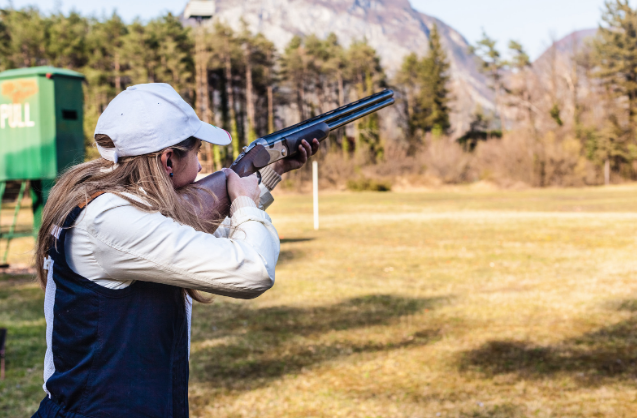
While our numbers have decreased in recent decades, America’s hunting spirit – our desire to get out afield – may have not diminished at all. Image: Canva
What is Causing the Shift?
As the pandemic gripped our nation last spring, millions of Americans started to work from home. According to a working paper from the National Bureau of Economic Research, approximately half of the U.S. labor force began working remotely in the early days of the pandemic. It is now estimated that some 20 to 30 percent of workers will permanently continue to do so.
This shift away from downtown workplaces also caused a major shift in residential choices. From New York City to San Francisco, inner-city apartment dwellers fled to the suburbs in droves. Apparently, many kept going.
No longer tethered to working from an office or other in-town location, a growing number of individuals and families are now leaving expensive suburban areas and taking advantage of the much lower housing costs, less crowded surroundings and slower-paced living offered by mid- and smaller-sized towns and more rural areas.
Rural States are Luring “Metropolitan Migrants”
I’ve read that Colorado, Texas and Florida have attracted many of these new “metropolitan migrants.” Other locales are looking to lure them as well. Topeka, Kansas, has started a Choose Topeka campaign that offers new workers a $10,000 reimbursement for the first year of rent or $15,000 if they buy a home. Tulsa will pay you $10,000 to move there as will the state of Vermont.
Arkansas is offering remote workers $10,000 to move to the state’s northwest, Ozark Mountain region. To date, Arkansas has received more than 26,000 applications for this “move in” grant. Savannah, Georgia, is offering $2,000 incentive for newcomers. Ya’ll come on down.
Bozeman, Montana, was, for example, practically overrun this past summer with new folks moving in. Parking at hiking trailheads overflowed and drift boats on the Madison River stacked up like the old cab lines at Manhattan’s Grand Central Station. Many of these newcomers are planning to stay put as evidenced by the sharp rise in housing prices in this iconic Montana town.
According to the Wall Street Journal, along with Bozeman, Jackson Hole, Wyoming, Truckee, California, and New York’s Hudson Valley are becoming the nation’s new “Zoom Towns.” These various states, cities and towns all have one thing in common: They are a heck of a lot closer to good hunting and fishing locales than midtown Manhattan.
Fishing and Hunting License Sales Skyrocket
A surge in fishing this past spring was, in fact, an early indicator of the resurgence of America’s love affair with the out-of-doors. Looking across the country, 2020 resident fishing license sales in Vermont shot up 50 percent, were up 53 percent in Iowa and climbed by 30 percent in New York to name a few. Same with spring turkey license sales. Up year-over-year by 26 percent in Vermont, up 36 percent in Iowa and a whopping 58 percent in the Empire state.
This upward trend continued in the fall of 2020 and, in many states, in a big way. Michigan saw a 67 percent hike in new license buyers and sold 46 percent more apprentice licenses, an option that allows new hunters to give the sport a try under the supervision of a mentor. Idaho sold 28 percent more hunting and fishing licenses to first-time buyers. Young adults and a significant number of women are making up a notable portion of this new crop of outdoor enthusiasts.
Nationwide, the National Shooting Sports Foundation’s Hunting License Sales Index shows license sales increased 12.2 percent during the first nine months of 2020 versus the same period in 2019. The Foundation points out that, “If this increase holds during the fourth quarter of 2020, we expect there will have been an increase of more than one million hunters in 2020 over 2019.” That, folks, is something worth writing home about.
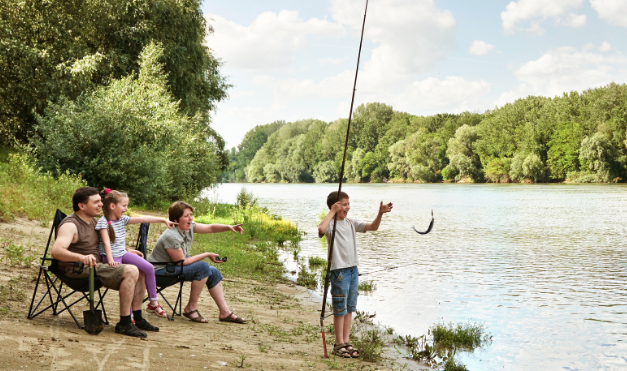
Young adults and a significant number of women are making up a notable portion of this new crop of outdoor enthusiasts. Image: Canva
Opportunity Knocked and Folks Rushed to the Door
The steep increases in participation we are now seeing suggest that there has been a strong pent-up demand for folks to get out in the woods or on the water and that pandemic, in a sense, finally broke that logjam. With a forced slowdown and with so many more working from home, people finally could get out and enjoy what they have been longing to do all along.
In a lifetime career in the hunting and shooting sports industry, I have noted that respondents in various hunter and angler surveys through the years marked “lack of time” as a key deterrent to more active participation. The proof, it now appears, is in the pudding: It seems our previously more busy and hectic urban lifestyles have been far more the barrier to hunting and fishing than any loss of their innate appeal. When opportunity knocked, folks rushed to the door.
Some might argue that hunting and fishing have simply “ridden the wave” along with other outdoor activities that have seen a jump in popularity during the pandemic. You can take a walk in the woods on the spur of the moment. Not so with hunting and fishing, especially the former. The planning and preparation needed to go afield, however, does not seem to be dampening the enthusiasm among newcomers to get started. Hunter education is a good example.
Outdoor Appeal Crosses Over to New Audiences
Due to the pandemic, most states have offered hunter safety courses online, waiving the typically required live-fire portion. That’s no doubt been a big help, but these courses, even online, are hardly perfunctory. They take more than a few hours of study and review and can be challenging for newcomers who did not have the head start of growing up in a hunting family.
Nonetheless, Nevada last year saw a 30 percent jump in hunting license sales and put 50 percent more people through its hunter safety classes. Washington graduated more than twice as many residents from its hunter safety program than the year before and Maine sold a record number of deer permits with young adults making up its fastest-growing customer segment. As much as hunting continues to attract its traditional participants, its appeal is crossing over to new audiences, young men and women for whom the climb seems well-worth the view.
For these new participants, it is interesting to speculate on what that “view” might be.
Certainly, the locavore movement that kicked off some 15 years ago got the ball rolling attracting a swath of young, non-traditional hunters and elevating the status of preparing wild game as part of a healthy and natural diet. Part and parcel of this trend is a broader “back to the land” interest among young adults who are now embracing “old time” crafts and products that reflect a desire, it could be argued, for a simpler, less technology-driven lifestyle.
Younger Generation Drawn to “Old World” Craft
Take the booming artisanal ax market. These high-end axes feature handles with hand-painted block and stripe motifs and are being snapped up by young professionals across the country, often at chichi department stores such as Nordstrom. Who woulda thought?
These fancy axes have spawned a number of ax throwing clubs and there is even a social club in Brooklyn that hosts wood-chopping workshops. Craig Roost, who works for the legacy U.S. ax maker, Council Tool Co., was quoted in a 2019 article in the Wall Street Journal, “Living in the Era of an Artisanal Ax Craze,” making the point, “Just because so many people live in cities doesn’t mean your internal desire to get out into the wilderness has been completely bred out of you.”
While having extra time on their hands prompted many Americans to get out into the woods or on the water, it appears that the 2020 pandemic was the accelerant that sparked the surge.
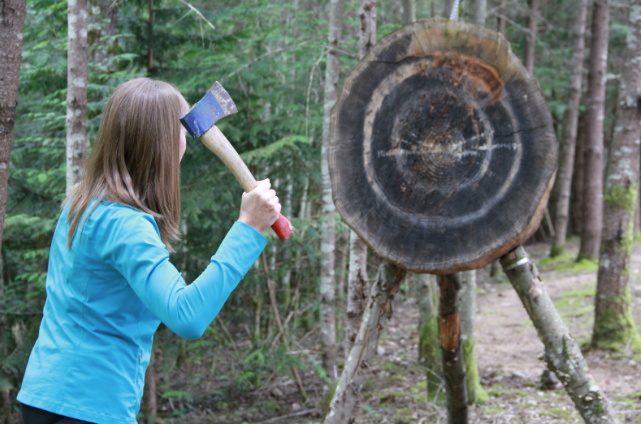
Just because so many people live in cities doesn’t mean your internal desire to get out into the wilderness has been completely bred out of you. Image: Canva
An Increase in the Need to Become More Self-Reliant
When the pandemic hit many Americans were struck by a sight they had never seen before: slim pickings in the meat and poultry section of their favorite supermarket. Concerns about potential breakdowns or disruptions in the nation’s food supply chains and broader worries about societal unrest prompted many increasingly jittery Americans, I believe, to take a step or two in becoming a bit more self-reliant.
A case in point: in 2020, books about canning and preserving foods shot up 137 percent over 2019. And, we are all familiar with the unprecedented number of firearm purchases across the country in 2020 (and continuing this year), with first-time buyers accounting for a significant portion of these sales. Yes, a “buy it while you still can” mentality is helping to spur these extraordinary sales, but the underlying motive is about individuals who are stepping up to take a more personal and active role in protecting themselves and their families.
In a time when Uber picks up and Grubhub delivers, younger adults in our country may now see certain life-skills, such as hunting or fishing, in a new light: If not necessities at least abilities that could prove “mighty handy” down an increasingly uncertain road. The good news is that living closer to good hunting and fishing locales and, with more time available, today’s new hunters should find fewer roadblocks in putting their outdoor skills to use.
What’s Next?
I saw a news report this past fall on Georgia’s deer season. One hunter who was interviewed said, “I had a great time in the woods. More than that, my family and I feel a whole lot better these days with a freezer full of venison back home.” This comment pretty much says it all.
In the next few years, we will see if this notable jump in hunting and fishing activity was something “of the moment,” or the beginning of a long-term trend. Helping to ensure the latter is a challenge we should all embrace.
About the Author
With degrees in political science and French from the University of North Carolina, Chapel Hill, Doug Painter served on the staff of the National Shooting Sports Foundation, the trade association for the firearms and ammunition industry, from 1973 until his retirement in 2011.
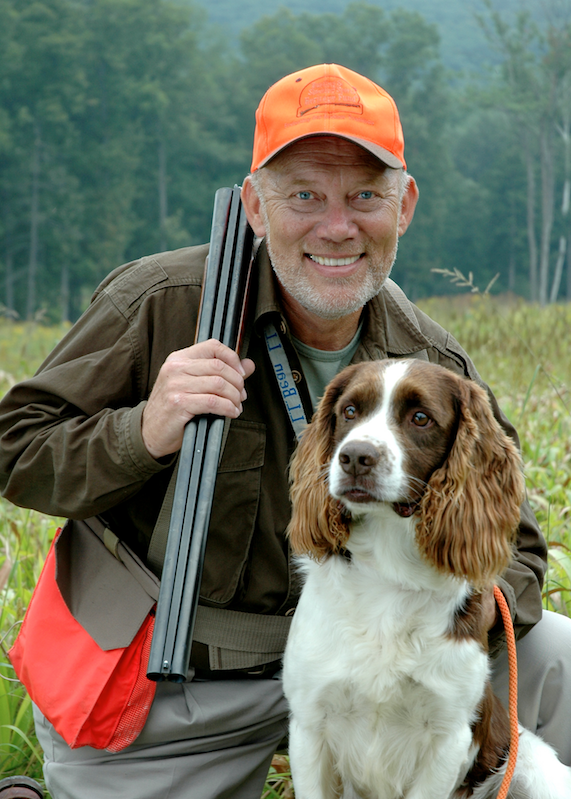 Painter began his NSSF career as a media-relations specialist and writer. Responsibilities later included positions as director of communications, marketing director, vice president of marketing administration and executive director. In 2002, he was named president and CEO of NSSF. At the same time, he was president of the Hunting and Shooting Sports Heritage Fund and the Sporting Arms and Ammunition Manufacturers’ Institute. Following his retirement, Painter served as NSSF’s Senior Advisor and Trade Liaison.
Painter began his NSSF career as a media-relations specialist and writer. Responsibilities later included positions as director of communications, marketing director, vice president of marketing administration and executive director. In 2002, he was named president and CEO of NSSF. At the same time, he was president of the Hunting and Shooting Sports Heritage Fund and the Sporting Arms and Ammunition Manufacturers’ Institute. Following his retirement, Painter served as NSSF’s Senior Advisor and Trade Liaison.
Currently, Painter is a consultant to Sporting Classics magazine and editor-in-chief of the Boone and Crockett Club magazine, Fair Chase.
Through his efforts at NSSF, his writing and work as a widely recognized television personality, Painter has focused on increasing public visibility and acceptance of the shooting sports and promoting firearm safety education. He has been a board member of the Hunting and Shooting Sports Heritage Trust, Wildlife Management Institute, the Youth Shooting Sports Alliance, Congressional Sportsman’s Foundation and a co-chair of the Association of Fish & Wildlife Agencies Steering Committee.
A life-long hunter, shooter and an avid fisherman, Mr. Painter has written extensively on a broad range of shooting sports topics as well as on wildlife conservation.
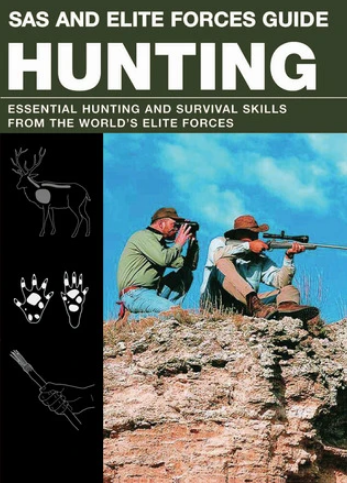 The Elite Forces Handbook of Hunting and Shooting demonstrates the core skills involved in being a self-reliant hunter. Includes detailed illustrations from tracking large game to shooting wild pheasant, this book is the essential guide to finding, killing and surviving off animals in the wild.
The Elite Forces Handbook of Hunting and Shooting demonstrates the core skills involved in being a self-reliant hunter. Includes detailed illustrations from tracking large game to shooting wild pheasant, this book is the essential guide to finding, killing and surviving off animals in the wild.
Chapters Include:
Using Spears and Slings, Hunting With Rifles, Tracking, Preparing Hides, Traps and Snares, Hunting With Dogs, Hunting Land Animals, Hunting in Different Terrains, Preparing a Kill, Wilderness Cooking and more! Buy Now

